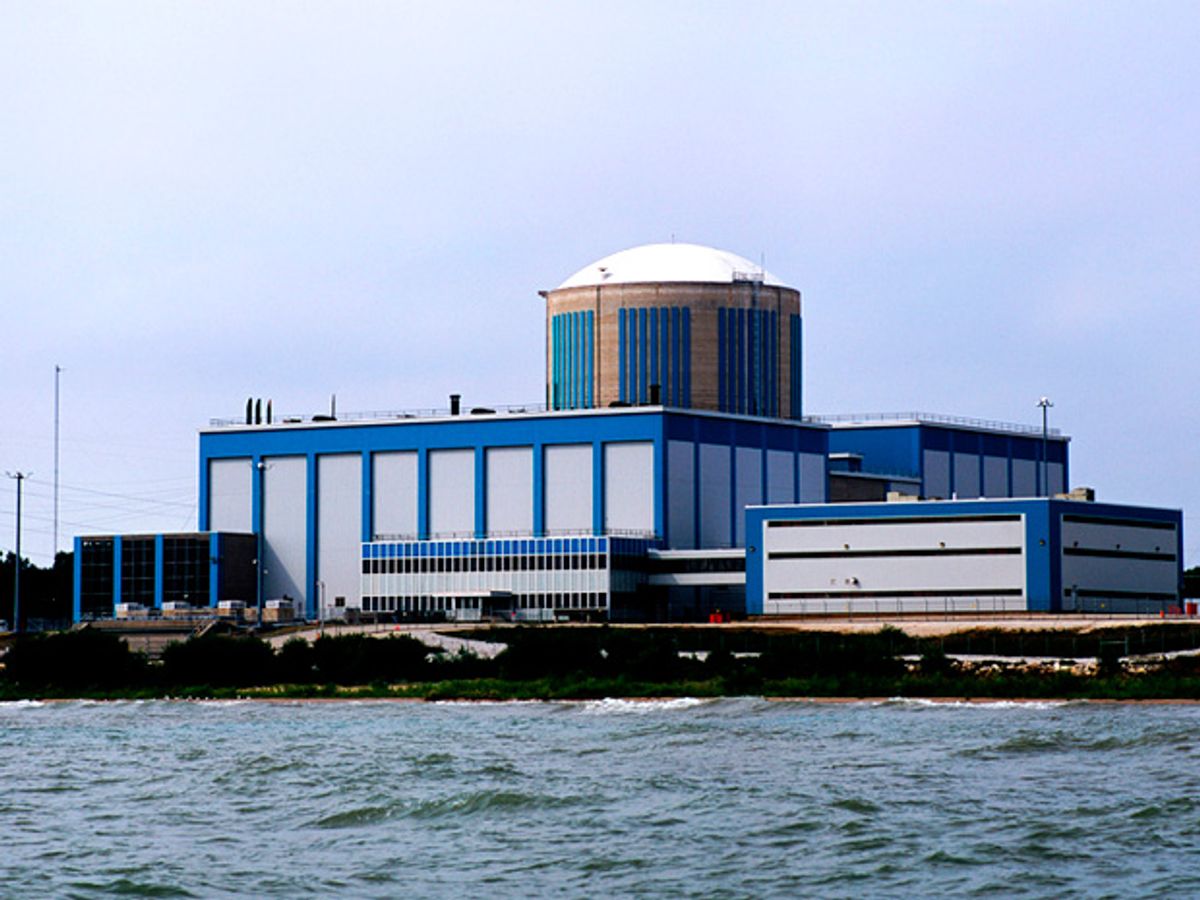There are no technical barriers to running some nuclear plants for up to 80 years, according to a new report from the American Physical Society.
The study, which advocates keeping many of the approximately 100 reactors in the U.S. running for at least 60 years, argues that the tradeoff between nuclear and gas is not necessarily a bargain the country should be making.
Nuclear power provides about 100 gigawatts of power, about 20 percent of the nation’s electricity supply. If its contribution starts to wane after 2030 as reactors close, there could be an energy shortfall, according to the APS.
“Nuclear power plants provide the nation with a source of clean energy at a time when renewables such as solar and wind are not yet ready to fill the potential gap in the nation’s base power needs created by the loss of nuclear power,” Roy Schwitters, lead author of the APS report, said in a statement.
Some experts in the renewable industry would challenge the claims that solar and wind cannot provide a sizeable portion of the energy that would otherwise go missing after 2030. Energy efficiency could also play a role, as it did when the San Onofre Nuclear Generating Station was taken offline in 2012 after radioactive steam leaks were detected.
According to the Energy Information Administration, energy use per household is expected to decrease through 2040, but overall use is expected to grow in the same time period as more homes overall use air conditioning and electronic gadgets. Still, aggressive energy efficiency measures could temper those projections.
Renewables and efficiency aside, as coal and fission plants are retired they are largely being replaced by natural gas-fired power plants. The use of natural gas, especially in the place of coal, which is the largest portion of generation, is a trend that might be the cheapest way for the U.S. to meet its greenhouse gas emissions targets through 2030, according to a NREL report.
The APS, however, argues that nuclear power continues to be a lower-emissions scenario than natural gas plants and that extending the lives of nuclear plants is “both complex and urgent.” Utilities also need clear government policy because they, by necessity, plan decades, not just years, in advance. The organization calls for more nuclear research—to raise understanding of how to maintain existing nuclear and build new ones, and to make clear just how long operating licenses can safely be renewed. Some nuclear experts argue that the United States should be leading the world in nuclear research, particularly in areas such as small nuclear reactors.
Opponents of nuclear power do not see it, advances notwithstanding, as the solution. "This is not a future technology. It’s an old technology, and it serves a useful purpose. But that purpose is running its course," Gregory Jaczko, who was chairman of the U.S. Nuclear Regulatory Commission (NRC) at the time of the Fukushima Daiichi accident, told IEEE Spectrum earlier this year.
The NRC has already issued extensions to many nuclear plants, raising their retirement age to 60 years, and is evaluating the possibility of some plants being open for 80 years. But it's unclear whether utilities will want to spend the money required to keep the assets up to date.
There are two research programs addressing the five main challenges to long-term operation: primary system metals and piping; concrete and containment structures; electrical cables; reactor pressure vessel and buried piping. “These programs have not uncovered any technical show-stoppers that would prevent the renewal of licenses from 60 to 80 years,” the study authors wrote, adding that more research is needed.
There are advances in monitoring aging nuclear plants, including techniques such as acoustic and ultrasonic monitoring, but the upgrades identified by the monitoring can cost up to $1 billion over a 40-to-60-year extension—money that some utilities might rather spend on new gas-fired plants instead of the controversial nuclear plants.
There is one more issue that could also hamper plans for new nuclear plants or for extending the lives of existing ones beyond 60 years: water. Nuclear plants are among the thirstiest options for electricity generation, and just this past summer, a heat wave threatened to shut down a nuclear power plant in Plymouth, Mass. because the amount of water taken from Cape Cod Bay had exceeded the limit set by the NRC.
Photo: Dominion Energy, APS





